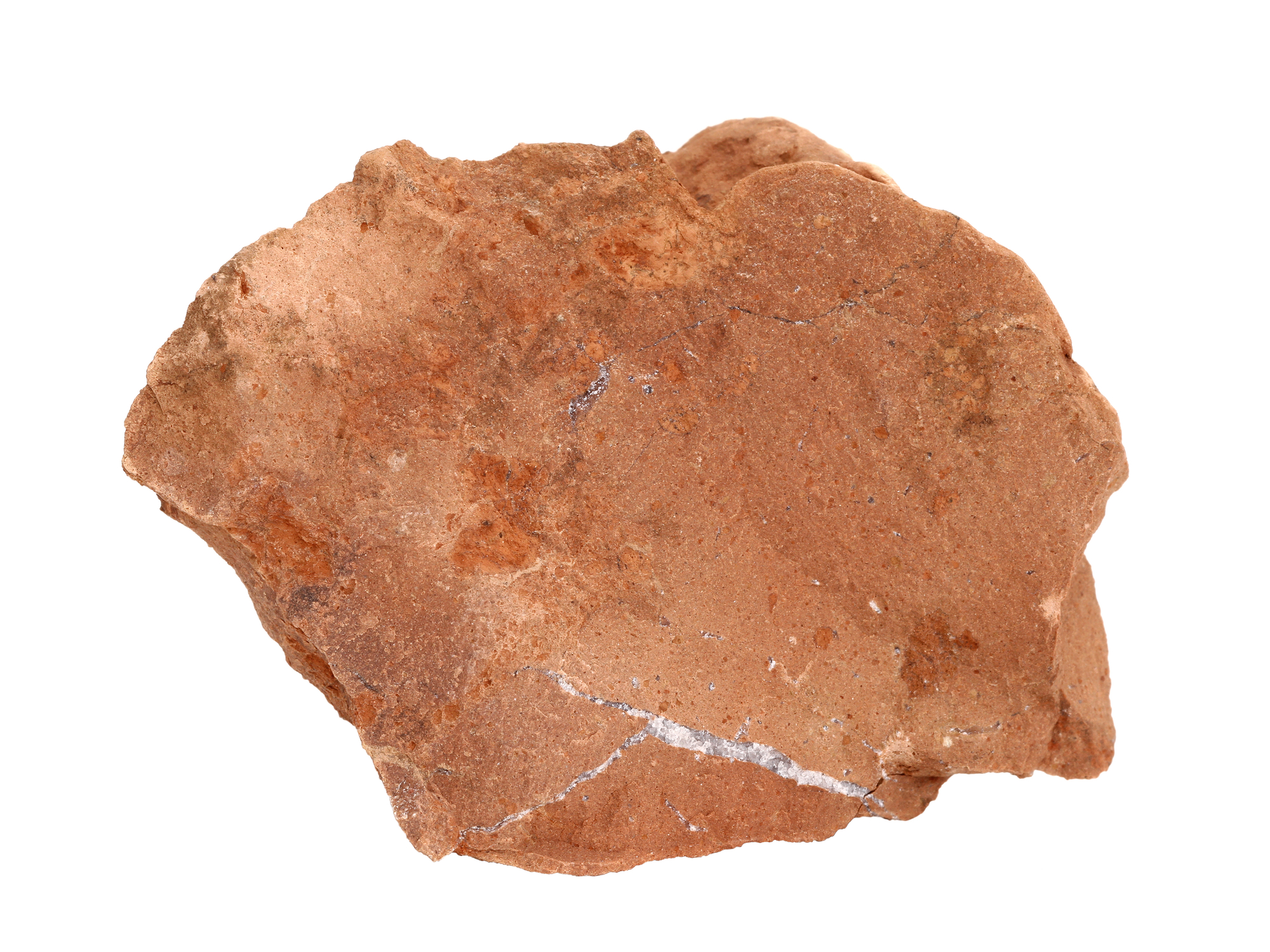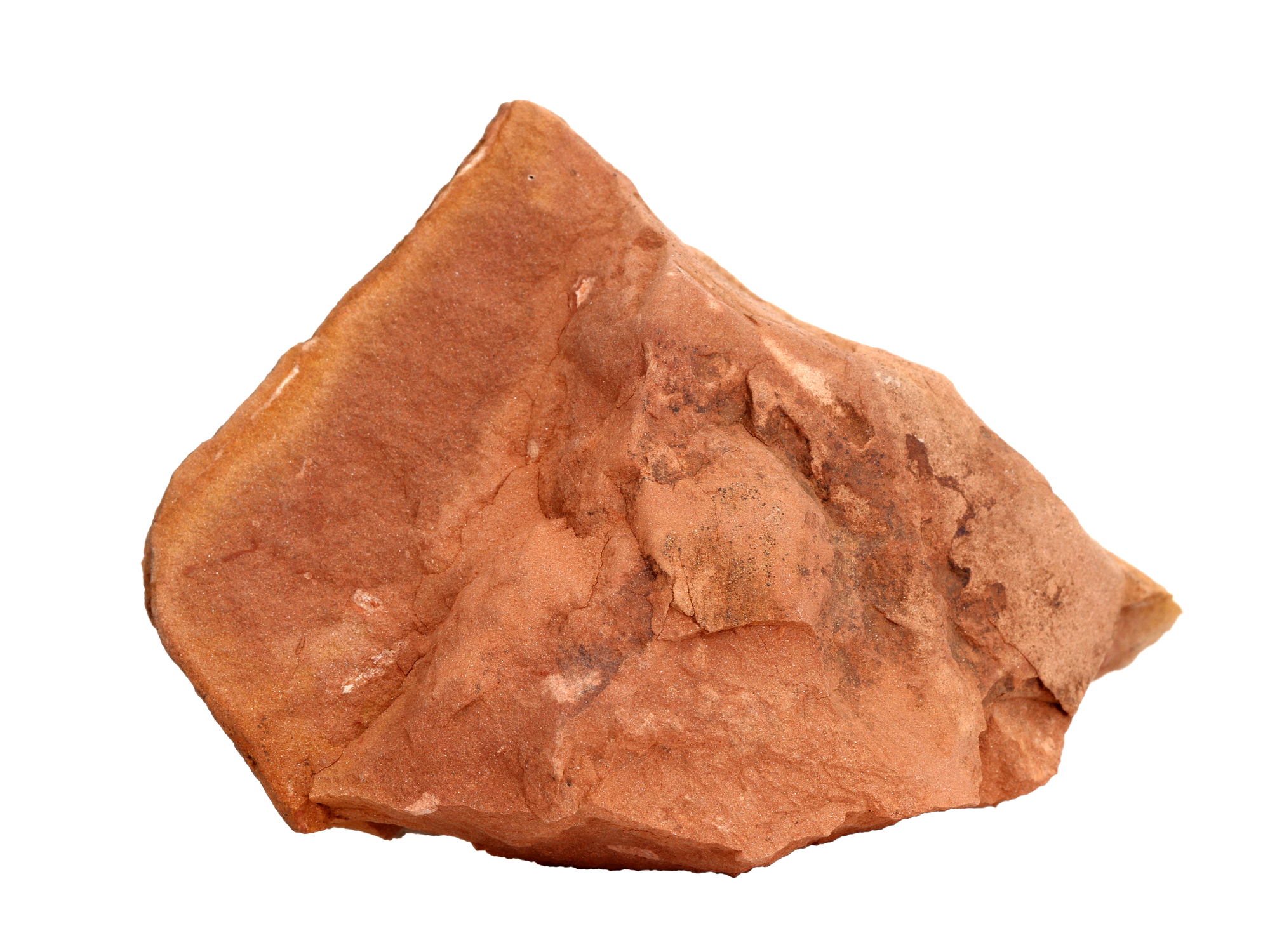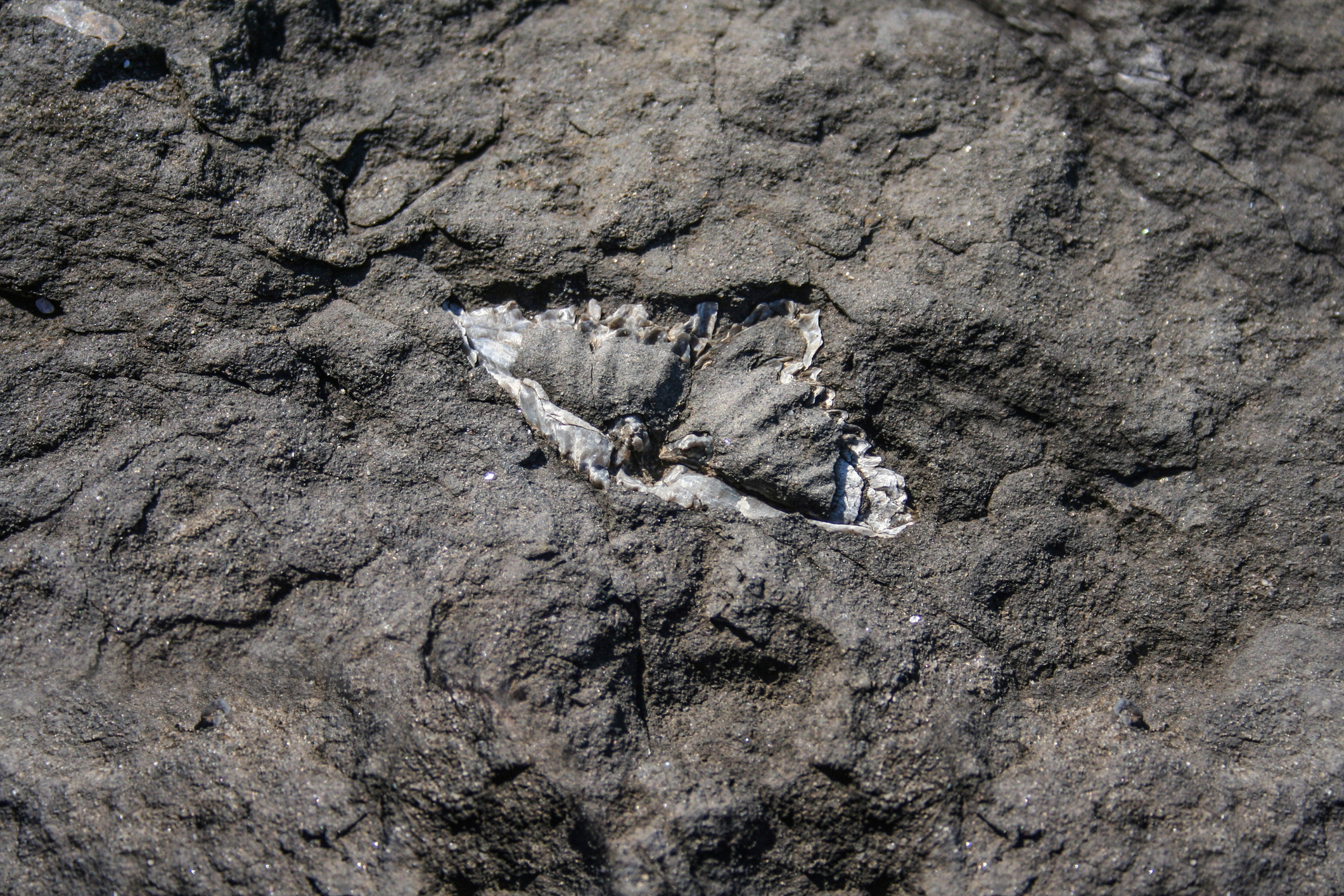Siltstone is a rock that many people have never even heard of. It is often confused for other, more well-known rock types, and it is a relatively uncommon rock. Identifying siltstone can sometimes be more difficult than you might think, so I thought it would be helpful to go over how to identify siltstone and how it differs from closely related rock types.
Siltstone is a clastic sedimentary rock made from fine grains (1/16 to 1/4 mm), too small to be seen with the naked eye. These silt-sized particles (usually quartz) are bound together by cement. Siltstone forms in low-energy marine environments, and is an intermediate rock type between mudstone and sandstone.
While siltstone is a clearly defined rock type, it can still be difficult to know whether a rock you’ve found is a siltstone. It can easily be confused for similar, closely related rocks. I’ll walk you through how to identify siltstone, what different varieties look like, and where it can be found.
What Does Siltstone Look Like?
At the most basic level, siltstone is literally silt that has been turned to stone. It is made up of bits and pieces of other rocks and minerals that have been compacted and cemented together.
Because siltstone is made from highly weathered pieces of other rocks, its appearance is, in large part, determined by the color and mineralogy of those original rocks. Because every siltstone’s parent rocks are different, there is almost unlimited variety in siltstone’s appearance.
On top of that, siltstone forms in many different geologic settings. Each setting is prone to creating a certain type of siltstone, each with its own particle size distributions, internal structures, and mineralogy.
Despite this variability, all siltstone varieties have a lot in common that makes them easily identifiable if you know what to look for.
In general, siltstone looks like silt grains cemented together, sometimes (but not always) with visible layers. The silt grains range from 1/16 to 1/4 mm across and cannot be seen without the aid of low-powered magnification. Siltstone is usually brownish, tan, reddish, gray, or off-white in color.

Pro Tip: I have created the best rock identification system you’ll find anywhere. It’s made to help everyone from brand new hobbyists to university Geology students, and includes an eBook, digital tools, a video tutorials. Find out more here!
While all siltstone meets this general description, there is a pretty wide spectrum of varieties that can look significantly different from one another. Their differences in appearance are primarily driven by the mineralogy of the parent rock and the depositional setting in which the siltstone forms.
Color is Driven by Source Rocks
Since siltstone is made from fragments of other rocks and minerals, it’s only natural that it inherits the colors of those source rocks (parent rocks). In most cases, sandstone will be made up of pieces of many different parent rocks, so the resulting color will be a mix of their colors.
For reasons we will get into later, siltstone tends to be made up of rock and mineral fragments that are fairly hard. Therefore, colors associated with these harder materials are more common in siltstone.
Quartz and feldspar are some of the common and widespread minerals you’ll find in many types of rocks, and siltstone is no exception. These minerals are fairly hard and resistant to weathering, so they can travel great distances before reaching their final resting place before lithification (turning into another rock).
Quartz tends to be a milky white or off-white color, while feldspar can be much more variable. Depending on the type of feldspar it may be whiteish, pink, red, or brownish.
While these harder parent rocks are very common, almost any rock can be a parent rock to a siltstone. This means that any color you see in rocks can also likely be found in a siltstone, given the right conditions.
Siltstones are also likely to have a higher clay content than sandstone, but not as high as a pure shale or mudstone. These clays are usually grayish in color and depending on how prevalent they are they can have a significant impact on the rock’s color.
Pro Tip: To get a better look at the crystals in your rocks and help with identification I highly recommend picking up a good geologist’s hand lens. I use this one that I got on Amazon.
Some of the coloration in sandstone comes from its cement. There are three primary cement types: silica, calcite, and iron oxide.
Silica and calcite are general very light in color or even colorless. They are also the most common types of cement. Iron oxide, however, is rust-red and often stains the sandstone to match.
Texture of Siltstone
One of the defining features of siltstone’s appearance is its texture. All siltstone is clastic and fine-grained, meaning that it is made up of rock and mineral fragments and that those fragments range in size from about 1/16 to 1/4 mm.
These fragments are not visible to the naked eye, so you’ll need a hand lens if you want to be able to see them. A nice hand lens is a really fun and useful tool when making observations about any rock, but especially one like siltstone.
While siltstone’s defined grain size is tightly constrained, there is a lot more variability when it comes to the shape of the grains and how well sorted they are.
Siltstone grains can run the full spectrum from angular to rounded. However, determining the shape of the grains is not particularly important for casual observers when describing a siltstone. It is enough to know that the approximate size of the grains without describing their shape or how well sorted they are. The grains are so small that you likely won’t be able to clearly see their shape, anyway.
How to Identify Siltstone
By now you might be thinking that if siltstone just looks like a bunch of silt turned into a rock, then identifying siltstone should be a trivial matter. While that is often the case, that assumption often leads people to misidentify other rock types as siltstone. As with any rock, it is important to take a more systematic approach when identifying siltstone and its variants.
To identify siltstone, feel and look at the surface of the rock to see if it is made of silt-sized grains, too small to see any individual grain with the naked eye. The rock’s surface will feel rough, like fine-grit sandpaper. Siltstone may be almost any color but is usually brown, tan, off-white, or reddish.
Another handy tip to use when trying to distinguish siltstone from shale or mudstone is to break off a tiny piece and chew it up in your mouth. Siltstone will feel gritty and rough on your teeth, while shale and mudstone will feel smooth and slick due to their shape of their respective grains. I wouldn’t make a habit of performing this test too often, though, for the health of your teeth!
A rock must meet all of these requirements to be considered siltstone:
- Clastic Sedimentary – Formed from the cementing together of rock and mineral fragments
- Fine-grained – Individual grains range in size from 1/16 to 1/4 mm across
Siltstone may also react with acid. I prefer to use common white vinegar to perform acid tests but in a lab setting you’d usually use a diluted hydrochloric acid solution (always take proper precautions with either).
The most common reason that siltstone might react with acid is its cement. If the siltstone is cemented together by calcite (which it commonly is) then that cement will react and fizz with acid. However, many siltstones are cemented together with other material (usually silica) that doesn’t react with acid, so this test is not diagnostic.

If your rock meets all of those criteria then it is very likely a siltstone, or at least something very closely related. There are, however, a few closely related rocks (and non-rocks) that people sometimes confuse for sandstone.
Tip: This article is part of my sedimentary rock identification series. To read more about how to identify all igneous rocks, check out my article here.
Siltstone is often confused for its most closely related rock family members – namely, sandstone, mudstone, and shale.
Siltstone and sandstone look very similar, and personally, I often find it difficult to distinguish between the two. But I always fall back on the rule of being able to see individual grains with the naked eye. If I can clearly make out individual grains over most of the rock then I call it a sandstone. If the individual grains aren’t clear and I need the aid of a hand lens, then I’ll call it a siltstone.
Similarly, many people have a hard time when trying to distinguish between siltstone and mudstone or shale. Mudstone and shale (a type of mudstone) are made up almost entirely of clay particles that are so small you can’t even see them with the aid of a hand lens. They usually feel much smoother (not gritty) to the touch than sandstone or siltstone. If I ever find myself trying to decide between identifying a rock as siltstone or mudstone I usually go with mudstone.
What Is Siltstone Made Of?
It might seem silly to even ask this question. We have already seemingly answered this question earlier in this article – siltstone is made of sand, right? But the real answer can be a little more involved than that. So, what exactly is siltstone made of?
In general, siltstone is made of silt grains that originated from older rocks that have been broken apart. The silt grains are usually made of quartz or feldspar, and may be accompanied by some clay particles. Binding these grains together is cement, which is typically made of silica, calcite, or iron oxide.
It is fairly normal to find fossils in siltstone if the conditions were right at the time of deposition. They are not nearly as prolific in siltstone as they are in shale or limestone, but it is still a relatively common occurrence.
The minerals that the silt grains are made from tend to be very hard. Specifically, most siltstones are primarily made up of quartz and feldspar grains. These minerals are both very common on the Earth’s surface and very resistant to weathering. They can sustain a great deal of abuse over time without becoming completely destroyed.
Other minerals may break down into clay-sized particles or dissolve entirely, but quartz and feldspar tend to stick around for a long time. This means that they can be transported great distances to eventually gather, be reworked, and solidify into sandstone.
Clay-sized particles are commonly mixed in with silt-sized grains in siltstone. In low-energy marine environments, these particles can settle out of the water column with the silt. This is part of the reason it can be hard to label a rock specifically as ‘siltstone’ or ‘mudstone’. The rock types grade into one another and it can be difficult to say where the clay content cutoff should be.
The cement that binds the grains together is almost entirely dependent on what minerals are present in the water moving through the silt at the time of compaction and cementation. For example, silica-laden water will seep through the silt grains and gradually coat their surfaces with silica as it precipitates out of solution, eventually binding the grains together.
Where Is Siltstone Found?
Despite its similarities to sandstone and mudstone, it is much less common than either. Sand-sized and clay-sized particles are much more prevalent than silt, which makes siltstone far less likely to form. Still, siltstone forms in often enough that you can find it in locations all over the world, often interbedded with or near sandstone and mudstone formations.
In general, siltstone is found in areas with a history of gradual accumulation of silt, such the distal part of deltas. These depositional environments are lower-energy of sandstone, but higher than those of mudstone. A nearby source of small quartz grains is often required for the formation of siltstone.
The silt-sized particles that eventually form siltstone are carried to the place of deposition by water or wind. After deposition, the silt is compacted and cemented together and then, over time, is often exposed at the surface of the Earth due to the forces of plate tectonics and erosion.
You can look for siltstone formations near you using this excellent interactive map from the USGS. I have a video about how to use this tool in my Practical Rock Identification System, plus even more information on how to identify siltstone and other rocks.
Usually, you’ll find siltstone formations near other sedimentary rocks like sandstone, mudstone, and shale. These rocks tend to form in cycles and groups related to the relative water levels at the time of deposition.

How Does Siltstone Form?
We’ve learned all about what siltstone looks like, what it is composed of, and generally where it’s found, but I have only briefly touched on how it’s actually formed. The creation of siltstone is a relatively straightforward process that always follows a few simple rules
Siltstone forms when silt grains are transported by wind or river currents to their place of deposition such as a beach, delta, or river bank. Older silt grains are covered and buried by new, younger sediment and undergo compaction, eventually becoming cemented together in a process called lithification.
The method by which the sand grains are transported is an important factor in the formation and final appearance of siltstone. A siltstone formed from on a beach looks distinctly different than one formed from a windblown desert sand dune.
Regardless of how the silt was originally deposited, if it is ever to become siltstone it must then be buried and cemented together.
Over time, the silt grains become compacted together by the weight of rocks and/or water above them. Then, cement such as silica or calcite precipitates out of the water seeping through the silt and clay particles to cement them together. The cement slowly grows between the particles until they are fused together, transforming them from ‘sediment’ to ‘sedimentary rock’.
Geologists can determine a siltstone’s original geological setting and method of deposition by analyzing the size and shape of its grains as well as any internal structures like crossbedding or bioturbation (signs of marine life burrowing in the sand).
What Is Siltstone Used For?
One of the reasons people may not be overly familiar with siltstone is because you don’t often see it in day to day life. It is not a popular material for construction or decoration, and until recently has had very little economic value.
Siltstone has historically been used as filler material for construction projects where rock quality is not overly important. Its relatively low porosity makes it a poor water aquifer, but it is becoming an increasingly attractive target for oil and gas drilling thanks to improved recovery methods.
I worked in the oil and gas business for many years, and oversaw the drilling of many wells that targeted siltstone layers. These formations were not previously economic to drill because the technology didn’t exist to effectively stimulate and produce them, but siltstones continue to show promise for oil and gas production all over the world.
This article is part of my rock identification series. To learn more about identifying rocks, check out my full in-depth guide here.
